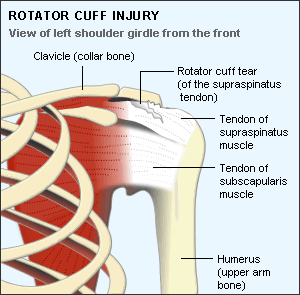Common sports: jogging, bycicle riding, long distance walking, soccer, basketball,
and tennis
Symptoms: the pain from external thigh gradually spreads to back thigh or below
orbicularis. You will have a pain on hip or upper thigh, get a swell on knees,
and hear rustle when moving your knees.
Movement instructions: the following movements will help you stretch hip
and thigh muscles, have direct impact on IT, make IT and muscles around more
flexible and resistant, and prevent rub and trauma:
The first movement: Standing
forward bend (Uttanasana)
This
movement helps to stretch hamstring at the join with IT
Performance method: stand straight and put you legs crossed so that the
right ankle lies in an opposite way to the left one. When your thighs are at
crossed posture, bend your body to the front and put your hands on the floor.
Put your hipbone towards and move your rib out of the hipbone frame so as to
avoid the backache. Keep the posture, breathe steadily in 1 minute, and then
repeat the process.
The second movement: Low Lunge
(Anjaneyasana)
This
movement helps to stretch fasciae difficult to touch at the top of IT.
Performance method: put the right leg to the front, and lift the hip
backwards so that it lies on the knees. The tendency of this movement is
pushing hipbone frame towards the front and stretching folded muscles of the
hip. When feeling that the bottom back is not painful, put the right hand on
the right thigh, lift the left hand above the head and towards the right. At this
time, you will feel the top hip of the left leg. Keep the posture, breathe
steadily in 30 to 60 seconds, and then reverse.
The third movement: Supine Cow Face
Pose
This
movement helps to stretch maximally glutei, attaches closely to IT.
Performance method: lie supinely on the floor and cross one thigh to the
other. Keep your thighs on the floor, hug them near to chest, and stop when you
feel that muscles are stretched. If you are unable to bend your legs, hold
tight the ankles and pull them closely to the hip. Keep the posture in 1 minute
and reverse.
3. Shoulder - Rotator cuff inflammation or tear
Rotator
cuff is a group including 4 kinds of muscle that help keep the humerus in
shoulder cavity stable and support the shoulders move. The tendons of these
muscles are often stimulated easily and tear due to trauma or movements that
are repeated many times. Typically, this injures weak muscles that help
shouders’ blades stable and help cling to the rotator cuff.
Common sports: swimming, yoga, mountain climbing, goft, tennis
Symptoms: since rotator cuff includes 4 different kinds of muscle and tendon,
the symptoms will be different, depending on each kind of muscle. Generally,
you will feel really painful at the top of your shoulders, and the pain can
spread to everywhere near the shoulders, including blades and armpits.
Movement instructions: the following movements help you practice strength
of muscles around shouders and recover the rotator cuff. Thanks to that, you
will have a more strongly supporting structure to reduce the threat of
contracting trauma and recover more quickly.

Rotator cuff tear
The first movement: Cow Face Pose
(Gomukhasana)
This
movement helps to stretch the whole rotator cuff by moving both internal and
external hand muscles. (If you shouders are tightened, you can do this movement
in the hot tank or use the help of a strip of silk or towel if you cannot touch
it).
Performance method: in standing (or sitting) posture, put your left hand
straight to the left, parallel with the floor, move the hand inside, rotate
your thumb down to the floor, then point at the wall on your back, and let your
hand face down. Breathe deep, move the hand to the body and put the forearm
backwards so that it is parallel to the belt and the left elbow is against the
left body. Move the shoulders backwards, and move the forearm to the top back
until it is parallel with backbone. Put your right hand to the front, stretch
it, and fold the elbow to the back until both hands touch each other. Keep the
posture in 1 minute and reverse.
The second movement: Blank Pose
This
movement helps to consolidate strength for blade’s muscles in shouders and buid
a good base for rotator cuff.
Performance
method: lie on the floor with propping and pushing posture. When breathing out,
keep the elbow straight, gradually put the thorax down to the floor and adjust
so that shouder blades are towards each other. When breathing in, strongly push
the floor so that your thorax is afar from it, keep the position of backbone
still, and adjust so that shouder blades are afar from each other. Imagine that
your shouder blades slide near or afar from each other around the thorax.
Repeat the movement 10 times, take rest by some breathing, and continue to
repeat it. To have firm and strong muscles, practice continually from 15 to 20
times.
The third movement: Slide Plank
Pose
This
movement helps to increase strength of muscles in rotator cuff and helps them
work coordinately.
Performance method: lie on the floor, keep the body’s strength equal to
the forearms so that elbows are under the shouders and two legs gather up.
Rotate the edge of your right leg and move it to your right forearm at 45o.
Hold your right hand tight and create strength to keep your fingers on the
floor. Lift and stretch your thorax, and lift your left hand up at once. Keep
the posture in within 30 seconds and reverse.